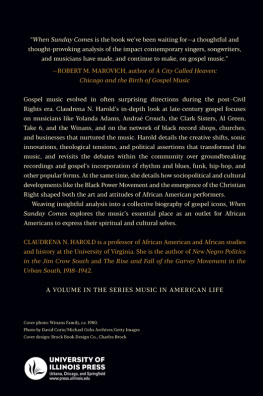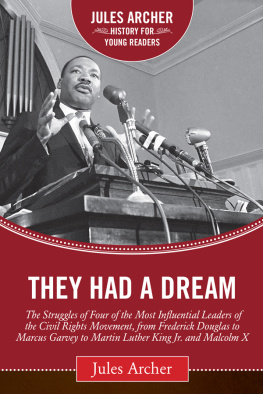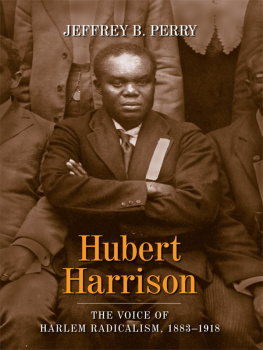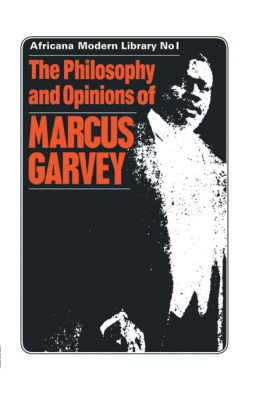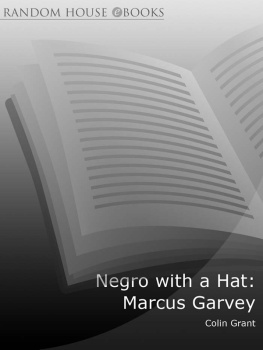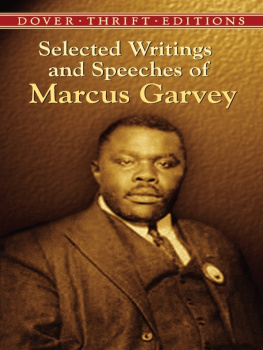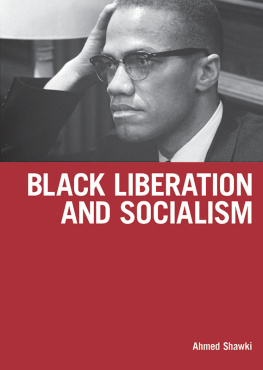S TUDIES IN A FRICAN A MERICAN H ISTORY AND C ULTURE
Editedby
Graham Hodges
Colgate University
A R OUTLEDGE S ERIES
S TUDIES IN A FRICAN A MERICAN H ISTORY AND C ULTURE
G RAHAM H ODGES , GeneralEditor
G IVING A V OICE TO THE V OICELESS
FourPioneeringBlackWomenJournalists
Jinx Coleman Broussard
C ONSTRUCTING B ELONGING
Class, Race, andHarlemsProfessionalWorkers
Sabiyha Prince
C ONTESTING THE T ERRAIN OF THE I VORY T OWER
SpiritualLeadershipofAfrican-AmericanWomenintheAcademy
Rochelle Garner
P OST -S OUL B LACK C INEMA
Discontinuities, Innovations, andBreakpoints, 19701995
William R. Grant, IV
T HE M YSTERIOUS V OODOO Q UEEN , M ARIE L AVEAUX
AStudyofPowerfulFemaleLeadershipinNineteenth-CenturyNewOrleans
Ina Johanna Fandrich
R ACE AND M ASCULINITY IN C ONTEMPORARY A MERICAN P RISON N ARRATIVES
Auli Ek
S WINGING THE V ERNACULAR
JazzandAfricanAmericanModernistLiterature
Michael Borshuk
B OYS , B OYZ , B OIS
AnEthicsofBlackMasculinityinFilmandPopularMedia
Keith M. Harris
M OVEMENT M ATTERS
AmericanAntiapartheidActivismandtheRiseofMulticulturalPolitics
David L. Hostetter
S LAVERY , S OUTHERN C ULTURE , AND E DUCATION IN L ITTLE D IXIE , M ISSOURI , 18201860
Jeffrey C. Stone
C OURTING C OMMUNITIES
BlackFemaleNationalismandSyncre-NationalismintheNineteenth-CenturyNorth
Kathy L. Glass
T HE S ELLING OF C IVIL R IGHTS
TheStudentNonviolentCoordinatingCommitteeandtheUseofPublicRelations Vanessa Murphree
B LACK L IBERATION IN THE M IDWEST
TheStruggleinSt. Louis, Missouri, 19641970
Kenneth S. Jolly
W HEN TO S TOP THE C HEERING ?
TheBlackPress, theBlackCommunity, andtheIntegrationofProfessionalBaseball Brian Carroll
T HE R ISE AND F ALL OF THE G ARVEY M OVEMENT IN THE U RBAN S OUTH , 19181942 Claudrena N. Harold
T HE R ISE AND F ALL OF THE G ARVEY M OVEMENT IN THE U RBAN S OUTH , 19181942
Claudrena N. Harold
Routledge
Taylor & Francis Group
711 Third Avenue
New York, NY 10017
Routledge
Taylor & Francis Group
2 Park Square
Milton Park, Abingdon
Oxon OX14 4RN
2007 by Taylor & Francis Group, LLC
Routledge is an imprint of Taylor & Francis Group, an Informa business
First issued in paperback 2012
ISBN13: 978-0-415-95619-2 (hbk)
ISBN13: 978-0-415-80402-8 (pbk)
No part of this book may be reprinted, reproduced, transmitted, or utilized in any form by any electronic, mechanical, or other means, now known or hereafter invented, including photocopying, microfilming, and recording, or in any information storage or retrieval system, without written permission from the publishers.
Trademark Notice: Product or corporate names may be trademarks or registered trademarks, and are used only for identification and explanation without intent to infringe.
Library of Congress Cataloging-in-Publication Data
Harold, Claudrena N.
The rise and fall of the Garvey movement in the urban South, 19181942 / by Claudrena N. Harold.
p. cm. (Studies in African American history and culture)
Based on authors thesis (Ph. D.)University of Notre Dame, 2004.
Includes bibliographical references and index.
ISBN 978-0-415-95619-2
1. Garvey, Marcus, 18871940. 2. Garvey, Marcus, 18871940Political and social views. 3. African AmericansSouthern StatesPolitics and government20th century. 4. African AmericansRace identitySouthern States-History20th century. 5. Black nationalismSouthern StatesHistory20th century. 6. Universal Negro Improvement Association. 7. Southern StatesRace relationsHistory20th century. 8. Southern StatesPolitics and government18651950. 9. City and town lifeSouthern StatesHistory20th century. 10. African AmericansBiography. I. Title.
E185.97.G3H37 2007
305.8960730750904-dc22 2006035788
Visit the Taylor & Francis Web site at
http://www.taylorandfrancis.com
and the Routledge Web site at
http://www.routledge-ny.com
Formyamazingmother,
SherylP. Harold
Contents
Completing this book would have been impossible without the love, encouragement, wisdom, criticism, and spiritual guidance of countless family, friends, mentors, colleagues, archivists, and political activists. A number of institutions have been supportive of my research project: the National Archives, the Library of Congress, the Rare Book, Manuscripts, and Special Collections Library at Duke University, the Special Collections Library at the University of Southern Mississippi, the Schomburg Center for Research in Black Culture, the University of Notre Dame, the University of Virginia, and Temple University.
Central to the completion of this book has been the insightful work of several scholars whove produced critically important studies on the Garvey Movement: Tony Martin, Theodore Vincent, Judith Stein, Michele Mitchell, Jahi Issa, Mary Gambrell Rolinson, Wilson Moses, Barbara Bair, and Ula Taylor. An important intellectual who has contributed immensely to broadening our understanding of black radical and nationalist movements, Robert Hill created intellectual space for those of us trying to better illuminate the Garvey movements complexities, ambiguities, and regional variations. Of course, Ive drawn inspiration not only from these and other scholars, but also from the courageous women and men in the UNIA who labored toward the creation of a better world for African people. Much appreciation to the late Estelle James, Millie Charles, and Florence Borders for sharing their stories.
Special thanks to all the lovely people from my Temple University days. A basketball scholarship was responsible for my journey to the City of Brotherly Love, but selecting Temple proved to be an excellent academic decision. Three wonderful people changed my life, transformed my thinking, and launched me on this crazy career path: Mario Beatty, Valethia Watkins-Beatty, and Greg Carr. Especially enriching during these years was the friendship of Brian Jones. Lengthy discussions with Greg, Mario, Valethia, Brian, among others in Temples African-American Studies Department, planted the intellectual seeds for this book and instilled within me a greater appreciation for the richness, diversity, and utility of black nationalism. Other scholars who also enriched my experience included Nathaniel Norment, Bettye Collier-Thomas, Theophile Obenga, and of course Charles Blockson. A special thanks to Nathaniel and Rose Norment and Tanya Clark for providing shelter during my research and pleasure trips to Philadelphia and New York.


